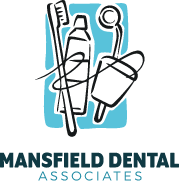Missing teeth can dramatically affect your life. You may think missing teeth only impact the beauty of your smile but missing teeth also impact the function of your mouth: You don’t eat, chew or speak as well when there are gaps in your grin from lost or extracted teeth. Get your life back with dental restorations: Restorative dentistry prosthetics and procedures, such as dental implants, bridges, and dentures, restore the wholeness of your mouth so you can eat and speak properly without the risk of damage to your remaining natural teeth.
Benefits of Replacing Missing Teeth
There are several ways that a patient can lose one tooth or multiple teeth. Sometimes teeth are accidentally knocked out. Also, sometimes tooth decay advances beyond repair and tooth extraction is required. Once a tooth has been lost, you do not want to leave the empty space in your mouth. Tooth loss can result in damaging pressure and excessive wear on your remaining teeth, stress on the jaw joint leading to pain and soreness, stunted verbal development, and an increased risk of experiencing tooth decay and gum disease.
Dentures
Whether you have lost some or all of your natural teeth, dentures are a removable restorative dentistry option to restore the look and function of your smile. Partial dentures can be utilized to replace a few missing teeth, while full dentures are recommended when you are missing all of the teeth from your upper or lower arches.
Bridges
A dental bridge is a restorative prosthetic that bridges the gap left behind by a missing tooth. A bridge is typically comprised of a center false tooth with a crown at each end. The crowns go over the natural teeth on opposite ends of the open space where the tooth once was.
Dental Implants
Implants are the most comprehensive solution for lost teeth. Dental implants mimic both the natural tooth root and the natural tooth crown, to replace the full tooth with a permanent implant in the gum tissue. Implants are comprised of a steel screw that is surgically embedded in the gum tissue, much like a natural tooth root, and a dental crown. The crown is added to the top of the screw, above the gum line.





Recent Comments